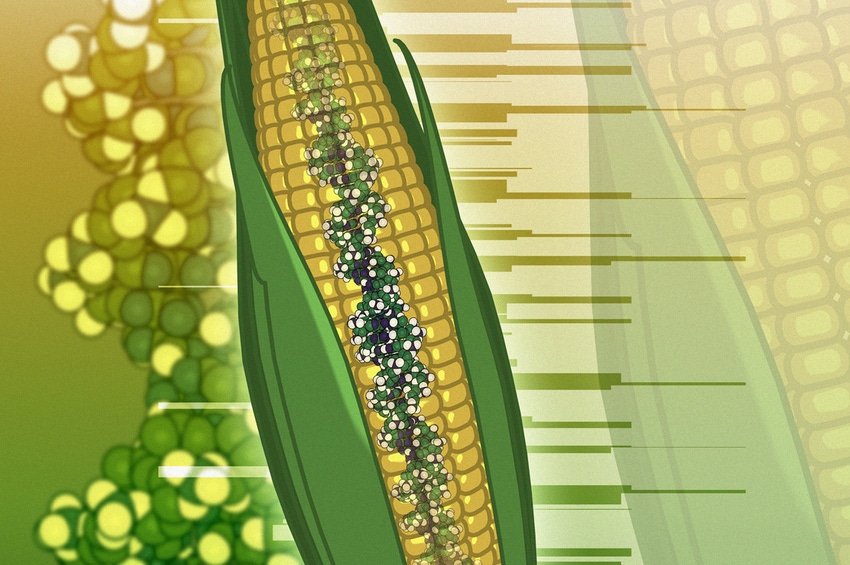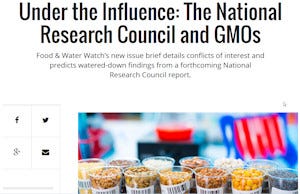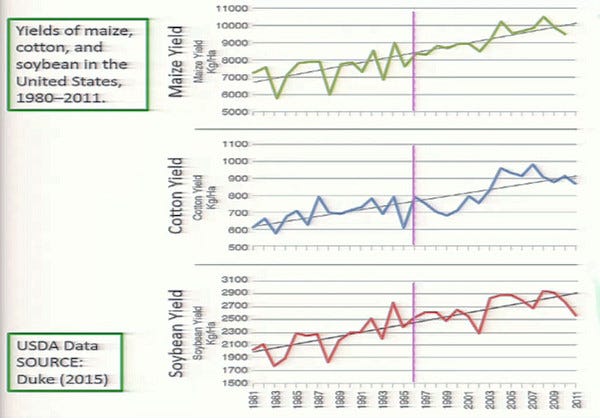May 18, 2016

This week the National Academy of Sciences - Sciences, Engineering, Medicine, released a long-awaited comprehensive look at GMO crops. First take, the technology is safe, and this conclusion comes after the 20-member committee looked at all sides of the issue. Their focus was plants and two key technologies - insect resistance and herbicide tolerance, and their work offered a thorough review of this widely used technology.
Here's a quick look at five things I took from the release yesterday and my review of the report so far (it's 400 pages and not light reading by any means).
1. The haters won't stop just because of this report

This screen grab shows the new report from Food and Water Watch released a day before the NAS GMO report.
The day before NAS released the report, at least one group - Food and Water Watch - released a report claiming that any results would be tainted because the National Research Council and NAS take money from corporate donors. Their report - called Under the Influence: the National Research Council and GMOs - aimed to raise questions before NAS even released its GMO findings.
And a representative of the group read a harshly worded statement at the release event for the new GMO report. Fred Gould, chairman of the committee, offered a cool response and offered to discuss the concerns. NAS worked to make sure there was no air of a conflict of interest, the report includes most of the 700 public comments with data to answer questions raised, it's a thorough look at the technology. Shake it off?
2. Time is a solid answer on food safety
One of the comments you often hear from supporters of GMO technology is that if the food was unsafe we would know by now because everyone would be sick. With 90% of soybeans and more than 70% of corn raised in the U.S. containing genetically engineered tech, supporters note if there was trouble it would turn up. The committee report says the same thing.
The group looked at 20 years of health data on cancers, chronic disease and patterns of disease in the U.S. and found no evidence of an increase, which would be evident if GMO crops caused trouble. To top it off the organization also compared U.S. and Canadian disease data with that from the United Kingdom and Europe where consumption is a lot lower, and found no disease incident difference. GMOs don't make you sick.
3. Animal studies may need another review
The NAS study took a look at the original animals studies and explored the issues surrounding feeding trials of GMO crops. They even devoted 3 pages to the Seralini study of tumors in mice - it's a good review of that entire issue. What they did find was that the way the studies were set up it would be difficult to reach conclusions. And they found little work being done on efficiency of feed conversion. In essence the work that's there shows safety, but beyond that more may be needed.
4. Where's the yield?
One issue the study looked at was the promise of higher yield from crops using this new technology, and they didn't find a difference in the yield trend. I've dropped in a screen grab of their chart showing trendline yield before and after the advent of GMO crops (the purple line is 1996 when the first tech started to appear). You can see the yield "promise" may not be there. But when asked about it, and why farmers would still use the tech if the yield wasn't improved, study chair Gould notes that the flexibility this technology offers farmers, and other benefits incurred from using GMOs in a cropping system made the tech popular.
For seed companies, and breeders, the promise of yield may be ahead as this technology gets more precise, and better for the future. Right now, it's not showing up in the data.

In this screen grab, you can see the trend yield, and how it didn't change with the advent of genetically engineered crops in 1996 - that's the vertical line in each of these charts.
5. What is a GMO?
Perhaps the most interesting outcome from this report is the changing nature of plant breeding and the use of biotech tools in new ways, which raises the question of what is a genetically modified organism? What was simple in 1996, is now more complicated with the rise of molecular tools for genomic discovery and precision breeding in new ways; and that doesn't even cover new tech like CRISPR-Cas and gene editing.
This report is a stick in a timeline, with a good look at the tech as it stands today. It asks questions about animal studies and yield that will be answered, and it explored the social impact of the technology. But as with all science, researchers aren't standing still, and more exciting tech is yet to come. Hopefully that too can get a thorough, objective review for public consumption.
You May Also Like




